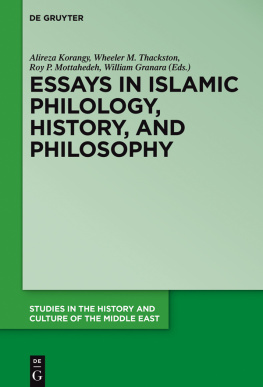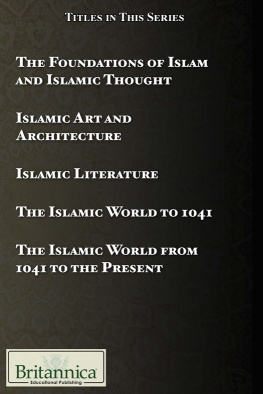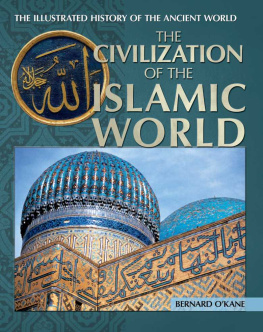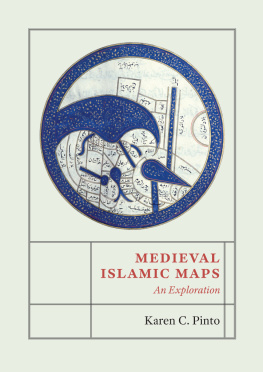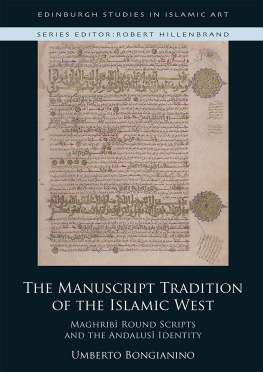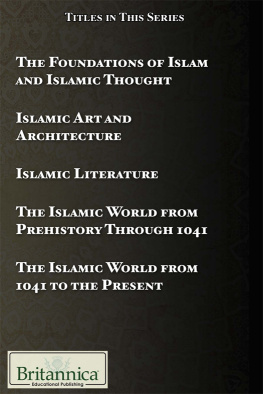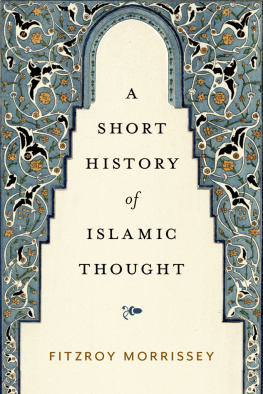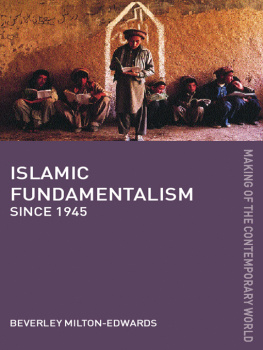The Islamic
Manuscript
Tradition

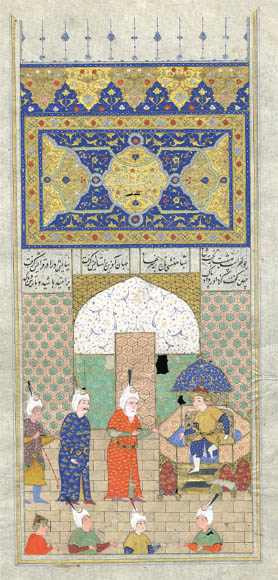
The Islamic Manuscript Tradition

TEN CENTURIES of BOOK ARTS in INDIANA UNIVERSITY COLLECTIONS
Edited by Christiane Gruber

This project was partially supported by Indiana Universitys New Frontiers in the Arts & Humanities Program, funded by the Lilly Endowment, Inc., and administered by the Office of the Vice Provost for Research.
The volume editor and the publisher wish to acknowledge Michael Cavanagh and Kevin Montague of the Indiana University Art Museum for their assistance in the preparation of illustrations for this volume.

This book is a publication of
Indiana University Press
601 North Morton Street
Bloomington, IN 47404-3797 USA
www.iupress.indiana.edu
Telephone orders 800-842-6796
Fax orders 812-855-7931
Orders by e-mail
2010 by Indiana University Press
All rights reserved
No part of this book may be reproduced or utilized in any form or by any means, electronic or mechanical, including photocopying and recording, or by any information storage and retrieval system, without permission in writing from the publisher. The Association of American University Presses Resolution on Permissions constitutes the only exception to this prohibition.
This book is printed on acid-free paper.
Manufactured in China
Library of Congress Cataloging-in-Publication Data
The Islamic manuscript tradition : ten centuries of book arts in Indiana University collections / edited by Christiane Gruber.
p. cm.
Includes bibliographical references.
ISBN 978-0-253-35377-1 (cloth : alk. paper)
1. ManuscriptsIslamic Empire. 2. Civilization, IslamicManuscripts. 3. IslamManuscripts. 4. Early printed booksIslamic Empire. 5. Illumination of books and manuscripts, Islamic. 6. Manuscripts, ArabicIndianaBloomington. 7. Manuscripts, PersianIndianaBloomington. 8. Manuscripts, TurkishIndianaBloomington. 9. Lilly Library (Indiana University, Bloomington) I. Gruber, Christiane, date
Z6611.I84I85 2010
091.091767dc22
2009017809
1 2 3 4 5 15 14 13 12 11 10
For Renata Holod
Scholar and Mentor Extraordinaire
From her student,
and her students students
Contents
by Oleg Grabar
Christiane Gruber
Janet Rauscher
Heather Coffey
Christiane Gruber
Yasemin Gencer
Emily Zoss
Brittany Payeur
Kitty Johnson
Foreword
The importance of books in Islamic culture and history is a well-established fact. It is also well established that, almost from the beginning in the seventh century when the first books appeared, books whose fragments are preserved in libraries and museums all over the world, there also appeared an art of the book. What is meant by the art of the book is not always clear. In a nutshell, it consists of a series of ways of enhancing the appearance and visual impact of the book. This was achieved through the thought-out composition of the page, through calligraphy (the art of writing attractive letters and words), through illumination (the addition of ornamental motifs on pages of text), through illustration (the making of pictures inspired by text), through binding in luxury materials, and through any combination of these techniques. All of them required considerable training of artisans or artists and deep knowledge of rules of all sorts. Some of these techniques, in particular illustrations, have become an independent field of study that has come to be known under the name of painting. And only too often scholars and students forget that these paintings were only one aspect of the making of books. It is especially refreshing to see that, in this particular volume, all aspects of what in my student days was called Buchwesen, the essence of books, are brought together and examined as a collective whole.
There are two other features particular to a book: a book is read, or at least can be read, and a book is collected, in a library or as a personal treasure. These aspects of books are little studied in scholarship dealing with Islamic art. The first one, reading, does not play an important part in the pages that follow, because it is a separate field of inquiry. Its investigation requires deciphering all sorts of marginalia, including the traces of use that can be detected through the wear and tear of pages, as well as information from contemporary memories that are rare or poorly known in traditional Muslim societies. The study of reading, which has developed so significantly in the historiography of western culture and art, is still in its infancy in dealing with the thousands of books produced and preserved in the Muslim world.
On the other hand, much is known about the collecting of books. It is in this area that this volume is particularly original. First, we have the striking phenomenon of so many documents, none of which can be considered major masterpieces of artistic creativity, gathered by American collectorswho are not themselves patrons of the Metropolitan Museum of Art in New York or of the Art Institute in Chicagoand given to Indiana University in Bloomington. Their reasons for collecting are many and varied, and they are not always expressed in words. In the case of Ruth E. Adomeit, her passion for a fascinating subset of books, the highly miniaturized ones, has preserved a category of artifacts that are not usually mentioned. In this fashion her energy and her investments illustrate a very special facet of literate creativity. Furthermore, this volume also stands out for the fact that, except for Qurans whose holy function makes them ubiquitous in scholarship, most of the manuscripts discussed here deal with non-quranic texts. Here, then, is an impressive illustration of the range of reading materials that existed in the Islamic world, from illustrated prayer books to abridgments of classics such as Firdawsis Shahnama. We are thus provided with a particularly wide sense of the tastes and of the interests of the reading public, succinctly encapsulated and beautifully illustrated by the holdings of Islamic art in Indiana Universitys collections.
The study of artifacts and of the writing of books acts in this way as a sort of social science that introduces us to all levels of culture, and not just to its masterpieces. In this sense, it is a sort of archaeology of a type of document, comparable to the archaeology of sites and of other disciplinary areas that have formed the primary fields of investigation of Professor Renata Holod, to whom this work is dedicated.
Oleg Grabar
Institute for Advanced Study
Princeton, N.J.
Preface
This volume emerged from a hands-on graduate seminar entitled From Pen to Paper: Islamic Codicology and Paleography, which I offered at Indiana University in fall 2006. In this seminar, graduate students and I worked with a number of materials and discovered that the various museum collections and libraries at Indiana Universityincluding the Indiana University Art Museum, the Lilly Library of Rare Books and Manuscripts, the Mathers Museum of World Cultures, and the Kinsey Institute for Research in Sex, Gender, and Reproductionhold a substantial collection of Islamic book arts. The collections are quite vast and varied, and include writing implements (such as pens, pen cases, inks, and papers), Qurans, classical Persian and Mughal illustrated manuscripts, Ottoman illustrated devotional works, Ottoman incunabula, Islamic erotica, and modern Turkish calligraphies and marbled papers.
Next page

